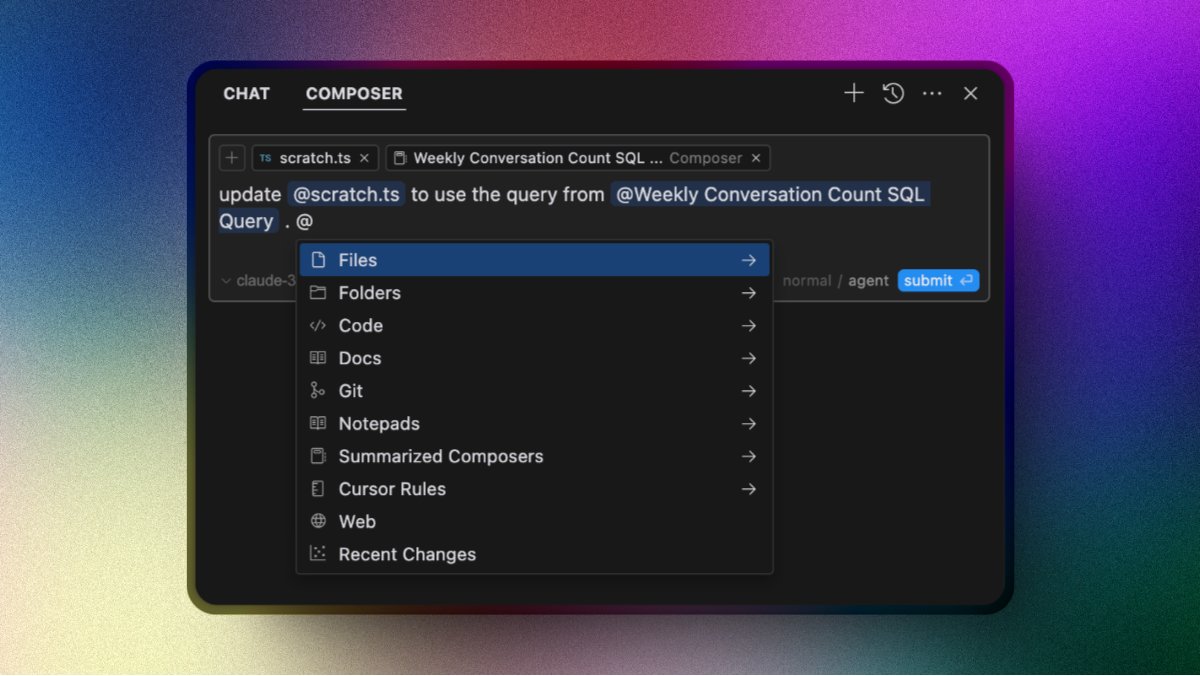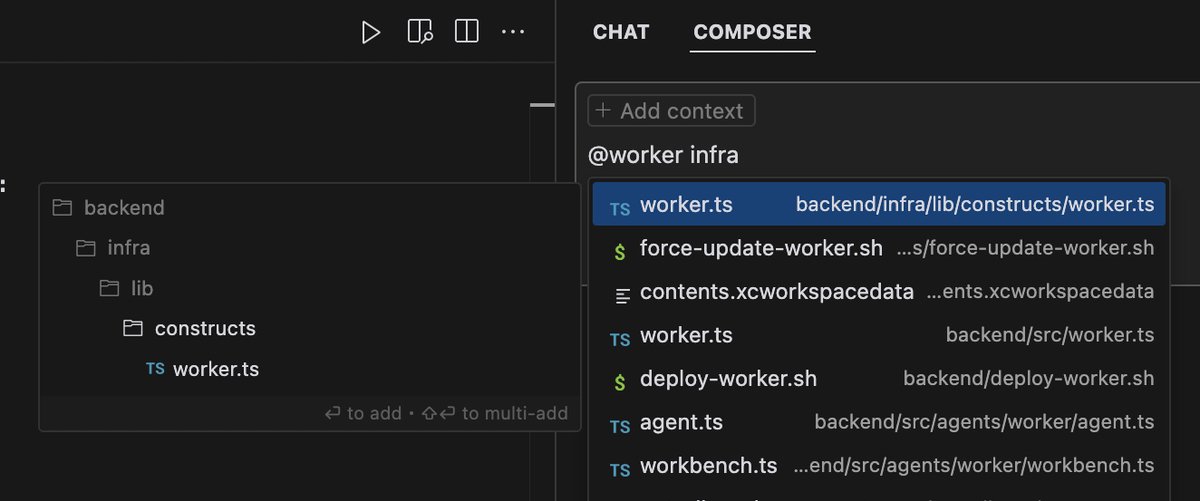
How to get URL link on X (Twitter) App


 1. light code review
1. light code review
https://twitter.com/505835394/status/1928224127942545605

 use @files and @folders to explicitly reference specific pieces of code. great when you know what code you want to include. personally, i always include specific files when i know what i want to change
use @files and @folders to explicitly reference specific pieces of code. great when you know what code you want to include. personally, i always include specific files when i know what i want to change 

 using tools, Cursor Agent have the capability to reason about when it should
using tools, Cursor Agent have the capability to reason about when it should